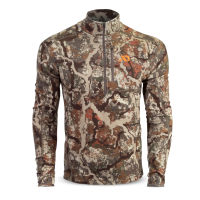
Voting for this matchup has concluded, and the Winchester Model 70 is the winner!

------------------
October Madness is back! This year, we're picking the greatest deer rifle of all time. And by "we," we mean "you." Scroll down to the poll at the bottom of this article to cast your vote, and the rifle with the most votes by 11:59pm on Tuesday, October 1st will advance to the next round. If you'd like a little more information before casting your vote, check out the cheat sheets on each rifle below. And feel free to explain your vote in the comments (or why the other side is dead wrong).

Don’t forget to vote in the other matchups, which you can do here.
Winchester Model 70
The Model 70 has been available in just about every centerfire cartridge imaginable, so there’s no point in listing them all, but here are some currently available and a few coveted oldies.
History
One of the longest tenured bolt action rifles still available, the Winchester Model 70’s endurance speaks volumes to its success and reliability. Of course, its most faithful followers swear that the Pre-64 models possess a level of superiority to those that come after. Prior to 1964, the Winchester Model 70’s bolt featured a Mauser-style, or controlled feed, action. After that, Winchester decided to cut costs and go with a push feed action. Rifle hunters lamented this change (they still do), claiming that the push feed would allow for more malfunctions. But even Jack O’Connor conceded that alterations to the Model 70 proved beneficial, if not just as reliable.
Features
Besides the differences in the Pre-64 Model 70 and those after, most of these rifles feature a three-position safety, hinged floorplate, and push feed action. Newer Model 70s, however, now harken back to the Pre-64 model with a classic controlled feed claw extractor. To be honest, both actions offer great reliability and choosing one is largely a subjective matter.
The Model 70 also has a hammer forged, free-floated barrel, blade ejector, and recessed target crown. These premium features include a premium price tag, but there’s a reason the Model 70 was coined the “Rifleman’s Rifle,” and the title remains relevant now.
Availability
The Model 70 still thrives today and there are so many iterations of the rifle, that choosing one might be a daunting task. However, that’s good news. From the Featherweights and Super Grades to the Long Range MB models with synthetic stocks and fluted barrels, you can find a model that fits even the most specific needs. Prices for the Winchester Model 70s start around $1200 if you want to buy new. Of course, you can find a reliable, well-used Model 70 for about half the price if you do some pawn/gun shop surfing. Excellent-condition Pre-64 Model 70s go upwards of a few grand. My long list of rifle regrets includes a Model 70 Featherweight in .270. Like a lot of my old hunting rifles, I had little invested in the gun, but talked myself into selling it because it wasn’t my cartridge of choice.
History
Pump (or slide) action rifles are mostly synonymous with Remingtons. Aside from Browning’s short run of the BPR, Savage’s rattling 170, and early Winchesters, the 760/7600 is your only option. Remington released their model 14 in 1912, but high costs kept it from ever taking off. Fast forward to 1952, and the company rolled out their model 760 until 1981, when they upgraded the bolt and added a zero to the model number. Yes, Remington released a model Six prior to the 7600, but only a few cosmetic differences distinguish these rifles. It wasn’t until 2020 that Remington actually discontinued the 7600, ending a historical run of one of the best deer hunting rifles.
Features
Since the 760/7600 was released, Remington offered various versions of this rifle, which included the standard 22-inch barrel or an 18.5-inch carbine. Early runs of the 760 were notorious for their rattling fore-ends, but the rifle’s final iteration, the 7600, cured this minor quibble by adding an O-ring. Remington also enlarged the mounting holes and magazine release, making the highly utilitarian rifle even better.
Availability
It’s only been four years since Remington retired the 7600, but a strong production run of both the 760 and 7600 means there are plenty of opportunities to find one or even snag a new-old-stock rifle. Most used 7600s in decent shape will run you around $600, while a new in the box might fetch a grand. I still lament selling a 7600 in .30-06 Sprg. during college that I bought for less than $300, but I especially regret passing on a .308 carbine for not much more.
If you stumble across one, there’s a good chance you’ll find a .30-06 Sprg. or .270 Win., as these were the most popular chamberings. My personal favorite is the 760 in .35 Rem, which my father still hunts with. It’s truly the perfect brush gun, and I used to relish hunting with this particular rifle whenever my dad couldn’t hunt. My only gripe is the .35 Rem requires its own magazine and replacements are scarce and pricey.








